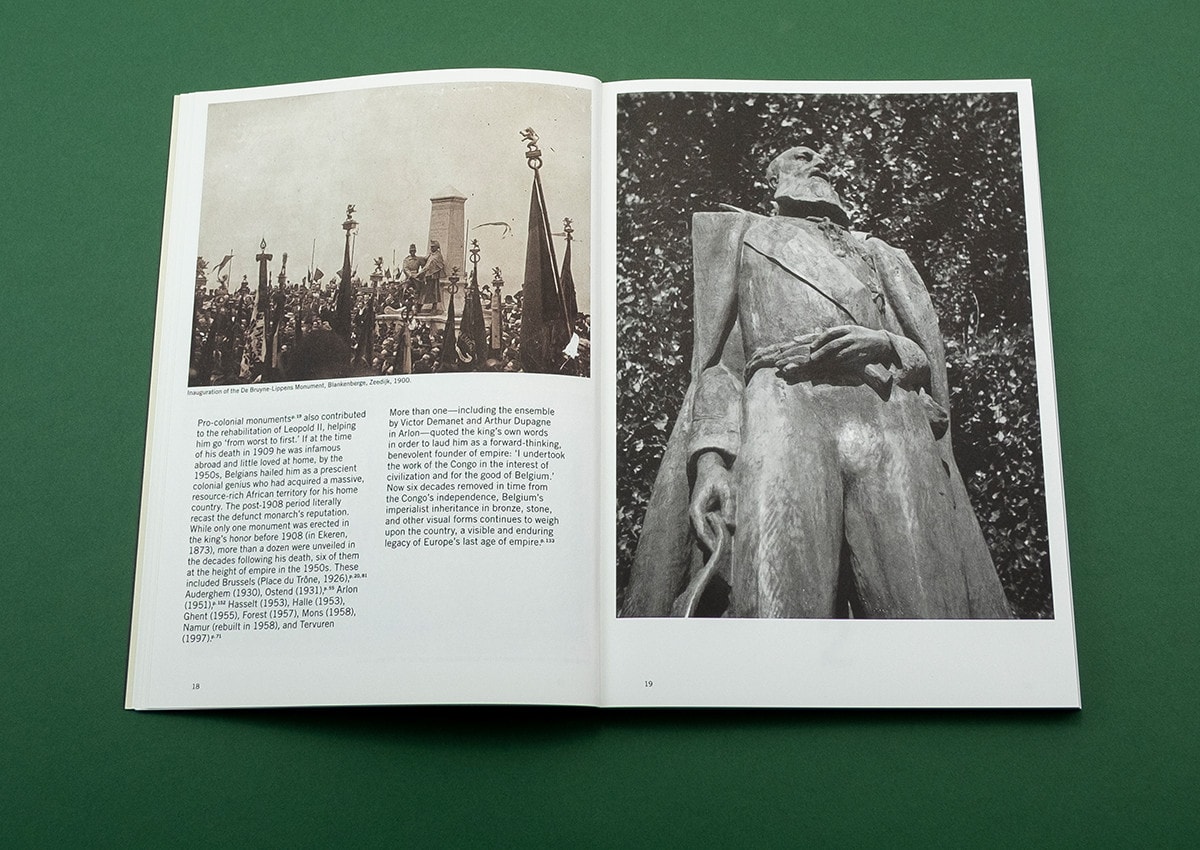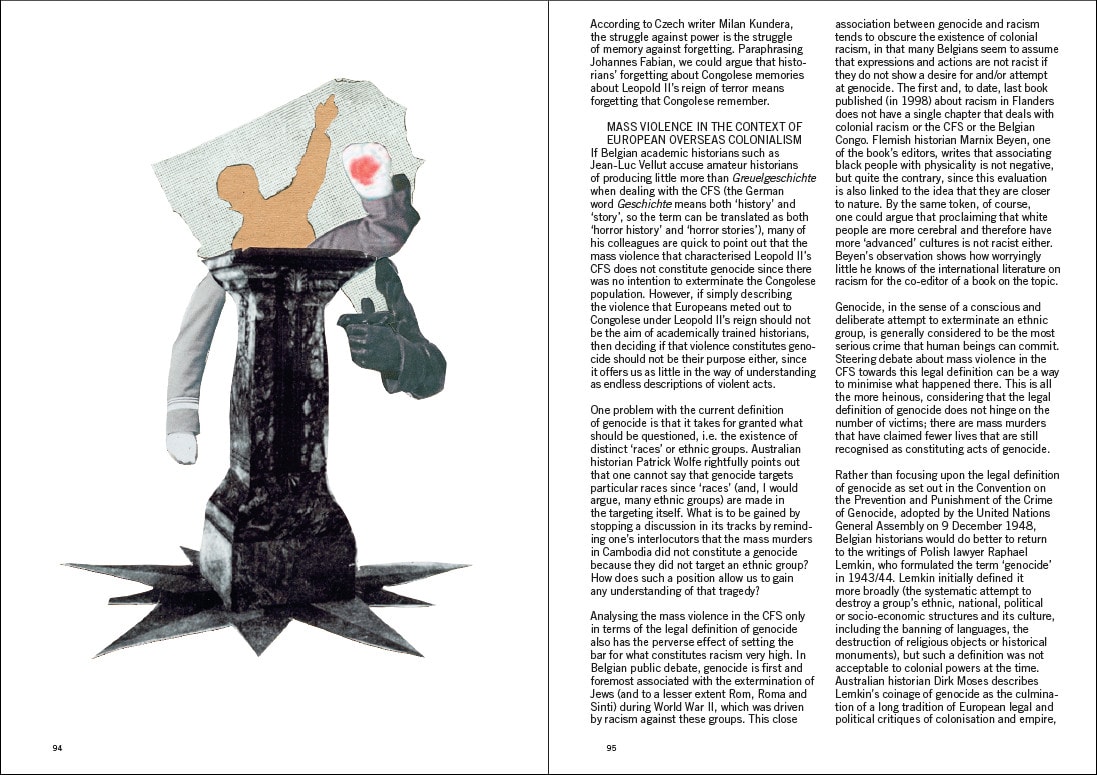Including an introductory text by Professor of History, Matthew G. Stanard, and an extensive essay by Bambi Ceuppens, researcher and curator at the Royal Museum for Central Africa in Tervuren.


At the Berlin Conference in 1885, King Leopold II of Belgium was proclaimed the founder and sole owner of the Congo Free State (CFS), by convincing the colonial nations of Europe to commit to common trade and improving the lives of the native inhabitants. His administration of the Congo was characterised by forced labour, torture and murder, causing the deaths of millions of Congolese people. A large part of the monetary gains from this exploitation was spent on public and private construction projects in Belgium that are often still part of our urban space.

„Imperialist monuments … date back to the very first years of the Leopoldian colonial endeavor. Hundreds of plaques, statues, busts, street names, and other commemorative markers were put up in Belgium to celebrate the African colony and to honor those who conquered it. Monuments strongly emphasized the military, in particular Belgian soldiers and officers who had served during the CFS period. After 1908, celebrating such men generated a kind of imperial tradition where none had existed, because unlike its fellow empire-builders, Belgium had no imperialistic past. Harkening back to the ‘heroic’ or ‘pioneer’ period of the CFS rooted the contemporaneous empire within a legitimate colonial history. Ironically, Leopold’s African rule, which was so horrific that international censure forced him to surrender it to Belgium, ended up becoming the foundational era upon which Belgians subsequently grounded the legitimacy of their colonial rule. Pro-colonial monuments also contributed to the rehabilitation of Leopold II, helping him go ‘from worst to first.’“ — Matthew G. Stanard


“Leopold II legitimised the invasion, occupation and colonisation of Congo in terms of the need to bring light into its alleged darkness, to ‘civilise’ its populations and to protect and save them from Arab-Swahili slave traders. The supposedly more ‘civilised’ Europeans turned out to be much more ‘savage’ vis-à-vis the Congolese, compared to the way these so-called ‘savages’ treated them. Their complete disregard for the sanctity of Congolese human lives was a crime of commission. If they did not deliberately set out to wipe them all out, their actions resulted in the direct or indirect death of millions because they did not put any value on their human dignity and did not care whether they lived or died. Why did they do what they did? How could they do what they did? There is not a single answer to these questions, but one reason is that they knew they could act with impunity.” — Bambi Ceuppens
You can watch a video browsing through the full publication here.
You can purchase this book through the publisher’s website.
Have a look at Oliver Leu’s exhibition ‘Leopold’s legacy’ at Tique I art space here.





